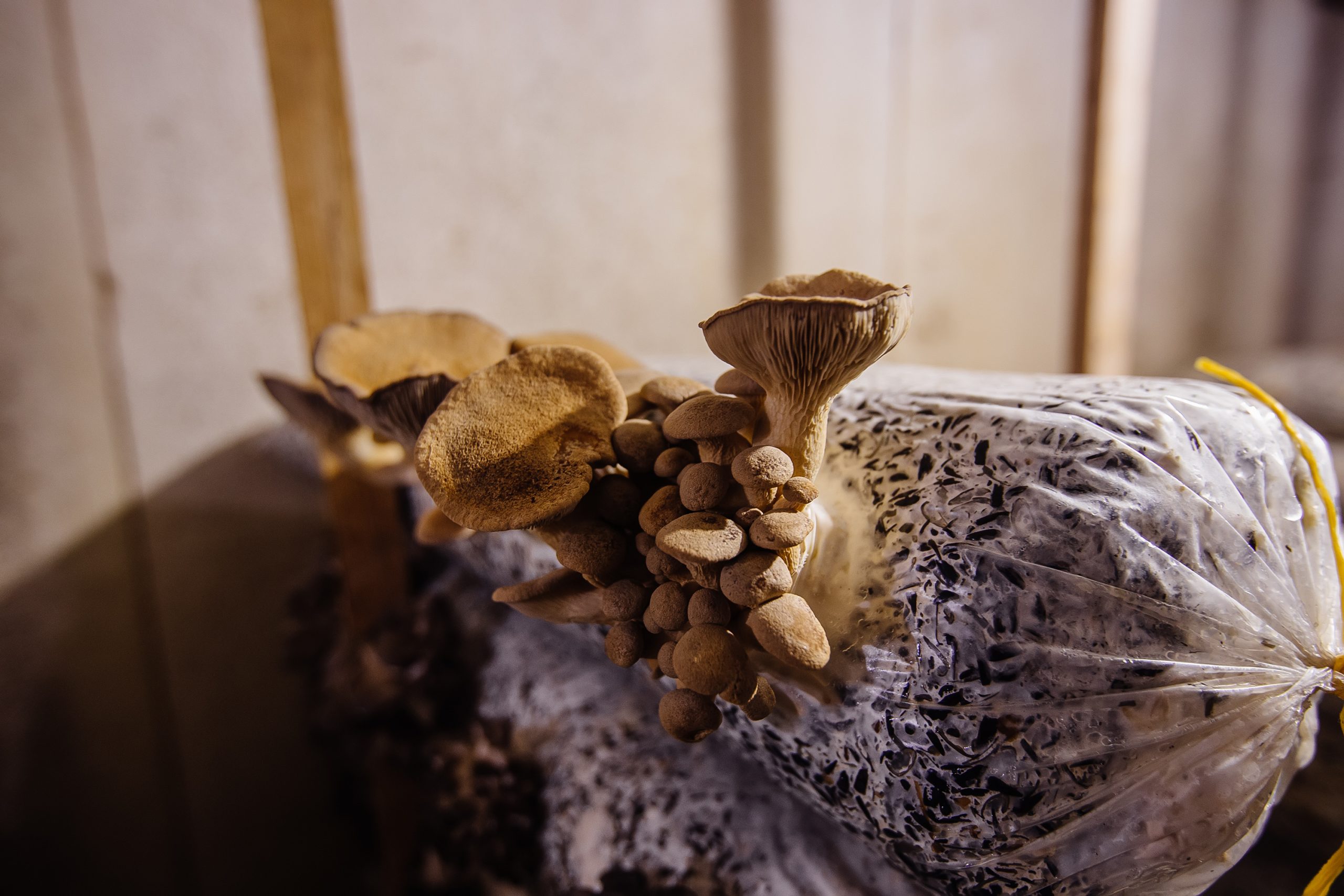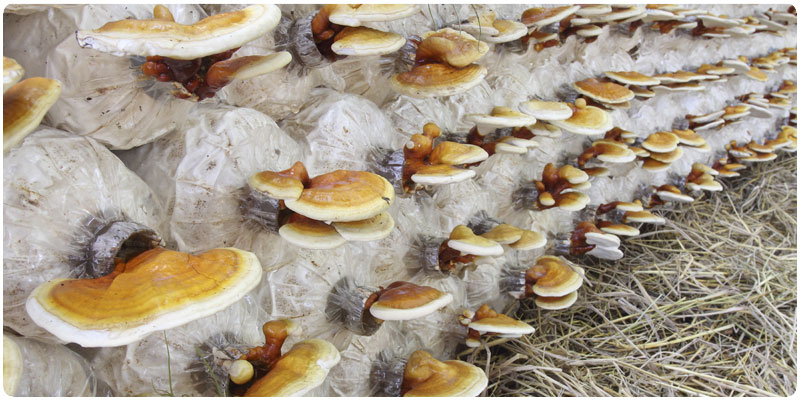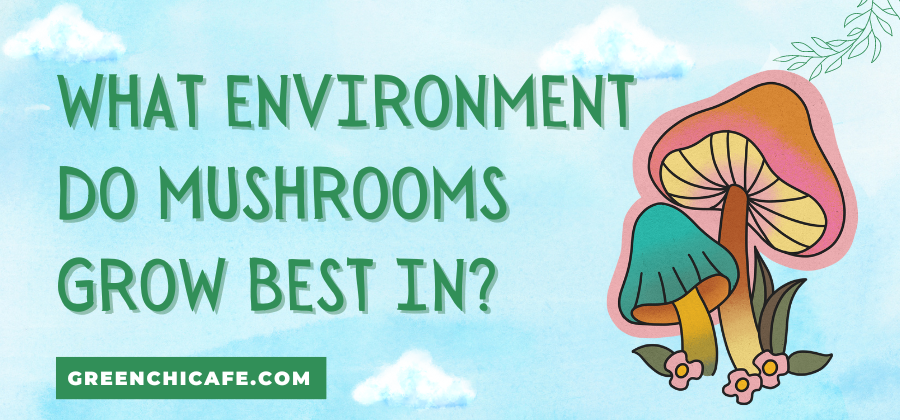Growing lush, healthy mushrooms depends on providing ideal environmental conditions tailored to the species.
Variables like temperature, humidity, substrate, and air circulation all influence mushroom growth and success.
This article explores how to cultivate perfect mushroom fruiting environments at home or commercially.
What Environment Do Mushrooms Grow Best In?

Most mushrooms thrive best in cool, stable temperatures around 60-70°F, very high humidity levels above 90%, gentle air circulation, and natural substrates like wood chips, sawdust, or straw that provide nutrients and moisture retention.
Tailoring these key environmental factors to individual mushroom species preferences allows bountiful fruiting.
Key Points
- Stable temperatures between 55-75°F suit most mushroom species. Extremes hamper growth.
- Humidity levels should be kept above 90% through misting or humidifiers.
- Gentle air circulation brings fresh air while preventing desiccation.
What Temperatures Favor Mushroom Growth?
Most edible mushroom species thrive in relatively cool conditions between 55-75°F.
Some fungi even thrive in arctic conditions.
Ranging just above or below this band stresses mushrooms.
Consistently warm areas over 80°F hinder fruiting for many types.
Fluctuating hot and cold extremes also slow growth. Stable temperatures between 60-70°F suit most indoor cultivation.
Individual mushroom species vary in ideal fruiting temperatures that should be maintained.
For example, shiitake, lion’s mane, and maitake favor slightly cooler conditions from 55-65°F.
Providing the preferred steady temperature range ensures healthy mushroom development.
Why Is High Humidity Important for Mushrooms?

Mushrooms require very humid environments in the 90-100% range to grow, similar to their native humid forest habitats.
Moisture is essential for mushrooms to develop from spores and fruit properly.
Low humidity causes desiccation, damaging mushrooms and reducing yields.
Indoor growing spaces must be kept humid through misting systems or evaporative humidifiers.
Outdoors, shaded areas near moisture sources like creeks provide ample humidity.
By closely regulating moisture levels, cultivators satisfy a critical mushroom environmental need.
How Does Air Circulation Impact Mushroom Growth?
Moving air gently circulated around developing mushrooms provides fresh high-CO2 and moisture-laden air.
This facilitates growth while preventing damaging stagnant conditions.
Slow air movement aids evapotranspiration, keeping humidity levels optimal.
Circulation allows monitoring and maintenance of ideal fruiting temperatures as well.
Fans or vents provide controlled air exchange.
However, drafts or excessive dry airflow will dehydrate mushrooms, necessitating balance.
Thoughtful air circulation control satisfies a key component of the preferred mushroom microclimate.
What Substrates Work Best for Growing Mushrooms?
Mushrooms thrive on several organic substrates like vermiculite able to provide nutrients, retain moisture, and facilitate mycelial colonization.
Wood chips, sawdust, straw, and corncobs suit most edible species.
Some mushrooms grow on logs or live trees.
Supplements like gypsum, bran, and coffee accelerate decomposition, enhancing food sources in a substrate.
The best mixes balance nutrition, moisture, and texture for healthy mycelial expansion.
Substrate recipes can be customized to available bulk materials based on mushroom preferences.
With intentional substrate preparation, cultivators give mushrooms the enriching medium needed to produce.
Can Mushrooms Grow Well Outdoors?
When environmental factors are controlled, mushrooms can fruit abundantly outdoors.
Natural forest habitats already provide ideal humidity, shade, and native soil communities.
Inoculating logs leverages existing wood decomposition.
For cultivated beds, site selection addressing sunlight, drainage, and temperature maximizes success.
Wind barriers prevent desiccation.
Supplemental misting maintains humidity.
Seasonal adjustments to substrates or shelters extend growth periods.
While indoor cultivation offers greater environmental regulation initially, outdoors stimulates natural mushroom development once conditions are optimized through siting and management.
What Mushroom Species Have Different Growth Conditions?
While many mushrooms share preferences for cool, humid, shady environments, some species deviate:
Morels thrive in warmer 60-70°F zones during spring, making outdoor cultivation difficult.
Shiitakes grow best between cold 55-65°F temperatures on hardwood logs or sawdust.
Oyster mushrooms tolerate slightly warmer and drier areas than other species.
Enoki mushrooms require extremely high humidity levels above 95 percent.
Inky caps prefer cooler summer temperatures below 60°F.
With knowledge of individual mushroom environmental needs, cultivators can fine-tune conditions for the best harvests.
What is the Perfect Environment for Growing Mushrooms?
The optimal environment for growing healthy, robust mushrooms contains these elements:
Stable temperatures between 60-70°F.
Avoid extremes under 55°F or over 80°F.
High humidity levels of 90-100% RH are maintained through misters, humidifiers, or damp substrates.
Gentle air circulation from fans or vents brings in fresh air without drying out mushrooms.
Avoid drafts.
Substrates like wood chips, sawdust, or straw hold moisture and provide abundant nutrients to support flush after flush of mushrooms.
Low light levels that avoid drying mushrooms out. Indirect natural lighting or dark spaces work well.
Emulating native forest conditions satisfies most mushrooms’ ideal fruiting environment requirements.
Tailoring humidity, light levels, and substrates to individual mushroom preferences fine-tunes fruiting room conditions.
Where is the Best Place to Grow Mushrooms?
The two top places to successfully grow mushrooms are:
Indoors
Climate-controlled mushroom greenhouse tents, grow rooms, or chambers allow meticulous regulation of temperature, humidity, air exchange, and lighting for reliable harvests.
Outdoors
Inoculating hardwood logs and stumps already harness the ideal shady, moist, microbial-rich environment found natively in forests.
Prepared mushroom beds leveraging natural shade and moisture also produce well.
For beginners, indoor mushroom cultivation offers the greatest control over environmental variables.
However, cultivating outdoors can generate bountiful harvests in environments mimicking mushrooms’ native habitat.
What are the Conditions for Colonizing Mushrooms?
Ideal conditions for colonizing mushroom substrate with mycelium include:
A sealed environment free from competitor molds and bacteria.
Using sterilized substrates prevents contamination.
Consistent warm temperatures from 75-85°F, which speed up mycelial growth.
Sufficient moisture content – substrates should feel like a wrung-out sponge.
Mist as needed.
Gas exchange provides oxygen while allowing carbon dioxide buildup to escape.
Dim lighting to avoid encouraging fruiting too early before colonization completes.
Providing the optimal initial environment enables the mushroom mycelium to rapidly and fully colonize the substrate before initiating the fruiting stage.
Robust colonization prepares the mycelium for profuse flushing when fruiting conditions arrive.
Key Takeaway:
- Managing key factors like stable temperatures, perpetual humidity, endemic substrate, and gentle air circulation satisfies mushrooms’ habitat requirements for robust, predictable fruiting cycles.
FAQ
What Temperature Kills Fungus?
Exposing mushrooms to temperatures exceeding 85°F or below 40°F for lengths of time will damage and kill the fungal mycelium. Fluctuating hot and cold extremes also impede growth.
Where is the Best Place to Grow Mushrooms?
Indoors, a climate-controlled mushroom growing tent or room provides ideal fruiting conditions. Outdoors, inoculating logs, or preparing sheltered beds leverages native mushroom habitat.
Is it Better to Grow Mushrooms Indoors or Outdoors?
For beginners, indoor cultivation allows better control over temperature, humidity, and other variables that impact mushroom yield and quality. Outdoors requires careful siting and preparation.
GreenChiCafe shares ideas for green living, including home gardening advice.
Visit our website to learn more about cultivating mushrooms!
